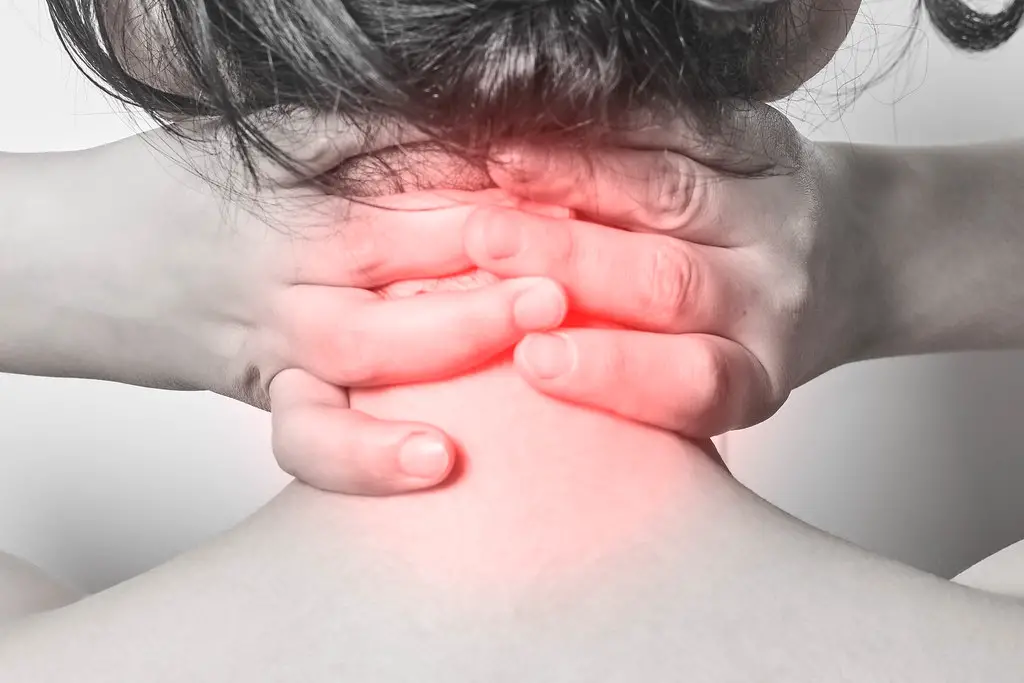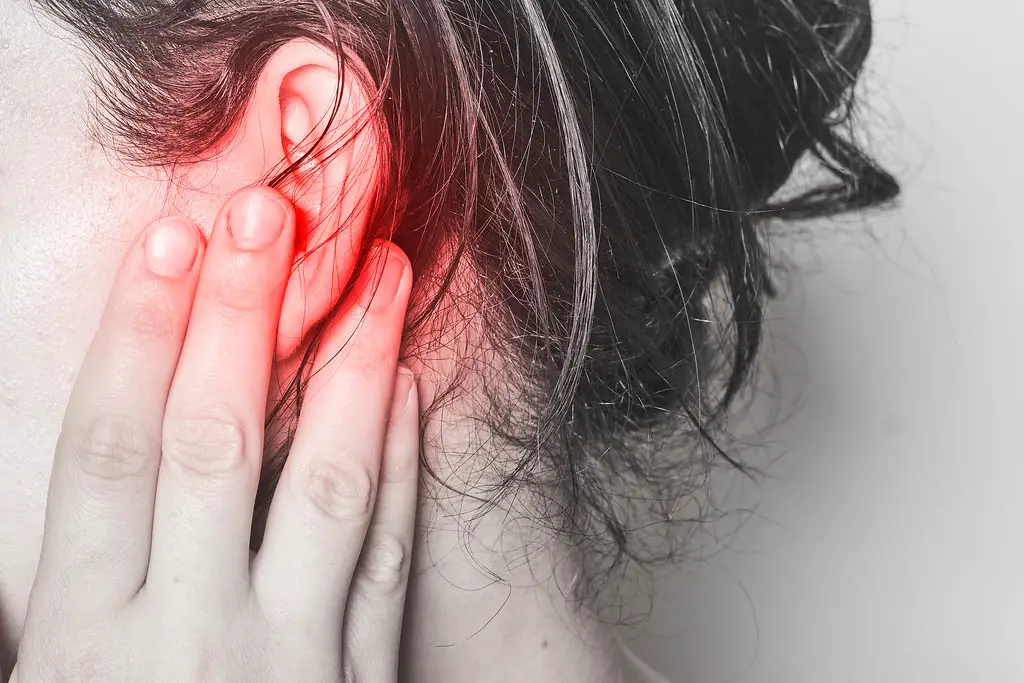Article reviewed and approved by Dr. Ibtissama Boukas, physician specializing in family medicine
You have pain in the neck, and cannot identify the source of your problem. In fact, when the symptoms do not appear after an accident (such as a whiplash), it is sometimes difficult to establish the exact cause of pain.
What are the possible causes of pain in the neck? Which are serious? And above all, what to do to relieve yourself and improve your quality of life.
This popular article offers 7 possible causes of neck pain (sometimes referred to as nuchalgia), with a focus on treatment strategies to get better.
1. trauma
This is the easiest cause to identify. It goes without saying that after a trauma such as a cervical sprain following a car accident (also called whiplash), you can develop pain in the neck.
The management of this condition will depend on the irritated structures, the observed consequences (particularly neurological), the patient's condition, etc.
To learn more about whiplash, see the following article.
2. Muscle pain
A contracted or over-stretched muscle can cause pain. This miro-damage often causes inflammation, muscle spasms and pain.
As the cervical region is composed of several muscles, it is possible that these contribute to pain in the neck.
This can come from a sports session where the muscles have been overworked. Or, micro-traumas due to daily activities. Finally, prolonged static postures regularly cause muscle dysfunction.
3. Cervical hernia
La cervical hernia is a disc pathology. Basically, one of the discs present between the vertebrae of the neck protrudes beyond its limits.
More precisely, the gelatinous nucleus present inside a intervertebral disc pushes and pierces the fibrous ring surrounding the disc.
The consequences of the hernia will depend on several factors. Indeed, in some cases, the cervical hernia will not be accompanied by any symptoms! This is because the body has probably adapted, and the hernia does not create inflammation or nerve irritation.
In other cases, cervical hernia can be problematic. Obviously, one of the symptoms observed is pain in the neck.
In addition to pain, radiation can be observed in the upper limbs, tingling or numbness, impairment of sensitivity and strength, impaired reflexes, etc.
Again, every case of cervical hernia is different. The prognosis and management will depend on the cervical hernia, the symptoms caused, and the functional consequences.
MRI is usually the method of choice for diagnosing a cervical hernia.
To learn more about cervical hernia, see the following article.
4. Joint dysfunction
The neck is made up of the juxtaposition of cervical vertebrae superimposed on each other. These are also connected by several joints (like the zygapophyseal joints).
Any joint can be the site of dysfunction such as osteoarthritis, degeneration, cartilage damage, etc. This can come from a trauma, a torticollis, or overuse.
X-rays can assess the integrity of the cervical vertebrae, and diagnose osteoarthritis or other joint problems.
To learn more, see the following articles:
5. Inflammatory Condition
Neck pain is not always caused by a mechanical problem. Sometimes an underlying inflammatory condition can contribute to the pain.
Conditions that can cause neck pain include:
- Rheumatoid arthritis
- Psoriatic arthritis
- Ankylosing spondylitis
- Etc
6. Emotional stress
The emotional component of neck pain should not be underestimated. Indeed, the cervical region is often solicited in the presence of anxiety-provoking events.
Muscle contraction of the trapezius muscles – often involved in times of stress – can indirectly increase pain in the neck. Suboccipital tension can also cause headaches (called cervicogenic headaches).
The same is true if you tend to clench your teeth when you are anxious. jaw muscles and the temporomandibular joint regularly cause pain radiating to the neck.
To learn more about neck pain and stress, see the following article.
To learn more about jaw pain, see the following article.
7. Serious illness (such as cancer)
In some rare cases, neck pain can be caused by a serious condition.
Typically, the pain is accompanied by unusual symptoms that should alert any healthcare professional.
What to do ?
When you suffer from pain in the neck, several options are available to you. Here is the structure generally proposed by health professionals.
Clarify the diagnosis
As we have seen, there are several possible causes of neck pain.
This is the reason why a medical professional must do several physical tests aimed at clarifying the diagnosis. For example, he will look at the mobility of the neck, the sensitivity of the lower limbs, the reflexes, etc.
In case of doubt, or to pursue the investigation, he could refer to medical imaging. In general, X-rays are prescribed to establish the presence of osteoarthritis or joint damage. MRI, on the other hand, is prescribed when nerve damage is suspected.
In some rare cases, further examinations will be requested. For example, an EMG will establish nerve conduction in the upper limbs.
Calm pain and inflammation
Inflammation, although necessary for the optimal healing of any wound, can cause pain and be harmful when it persists over time. In many cases, we will try to calm the inflammation to relieve pain in the neck.
Natural methods involve ice and natural products (arnica, turmeric, etc.) If these strategies prove ineffective, the doctor will usually prescribe anti-inflammatory drugs.
In some cases, the specialist will prescribe local cortisone injections. These are usually prescribed when conservative methods (including medication) do not work, and symptoms limit quality of life.
To learn more about cervical infiltrations, see the following article.
The ultimate solution remains the operation. However, it is used in rare cases. If we observe an instability of the cervical spine, the surgeon could place rods and screws. Or, a cervical hernia seriously compromising the spinal cord or the nerve roots could be surgically treated.
Reduce muscle tension
Muscular tensions, despite the fact that they are difficult to quantify, contribute to the pain felt in the neck. They can even cause headaches in some cases (called cervicogenic headache). For these reasons, it is beneficial to reduce muscle tension in and around the cervical region.
Several therapists can apply massage techniques to relax the muscles (physiotherapist, physiotherapist, massage therapist, osteopath, myotherapy, etc.). In addition to therapists, it is possible to apply self-massage techniques home to ease his stress.
There are also several specific stretches aimed at stretching certain neck muscles, and prescribed by health professionals. Eventually, heat can relax muscles and relieve symptoms.
Maximize mobility
Pain in the neck is regularly accompanied by stiffness, especially in the morning. This lack of mobility can limit certain daily activities (such as driving) and make symptoms worse.
A qualified therapist can measure the mobility of the cervical region, and prescribe exercises accordingly.
Strengthen neck muscles
It has been shown that people who suffer from neck pain have a weaker muscles at the neck.
This is probably due to muscle disinhibition secondary to pain, and underuse of the cervical muscles.
For this reason, it is important to strengthen the cervical region in order to relieve symptoms, and above all to prevent recurrence of injury.
Improve nerve mobility
This applies to those who have pain in the back of the neck that radiates into the arm. These pains are sometimes accompanied by burning, tingling or numbness.
Although there are several causes of radiating pain, the symptoms felt in the upper limb can come from suboptimal nerve mobility.
With this in mind, specific exercises (called neural mobilization exercises) can reduce radiation and soothe numbness.
"Correct" the posture
Many people attribute neck pain to poor posture. It's a myth.
Although a forward-projected posture can create discomfort in the neck, it must be understood that it is more the prolonged static position of the cervical region that will be responsible for the symptoms.
Instead of trying to change your posture, you should rather change your position regularly during your working hours. Also, the use of a posture corrector alone will not be able to correct the pain in the neck.
Conclusion
Neck pain comes from several potential causes. They can be connected to discs, joints, muscles, nerves, etc.
Diagnosis to clarify symptoms includes a complete physical examination, as well as medical imaging in some cases.
Management will depend on the origin of the symptoms, and should ideally mix passive and especially active approaches to pain control.
A health professional will help you clarify the diagnosis, determine the source of your problem, and suggest an appropriate treatment approach.
Good recovery !










